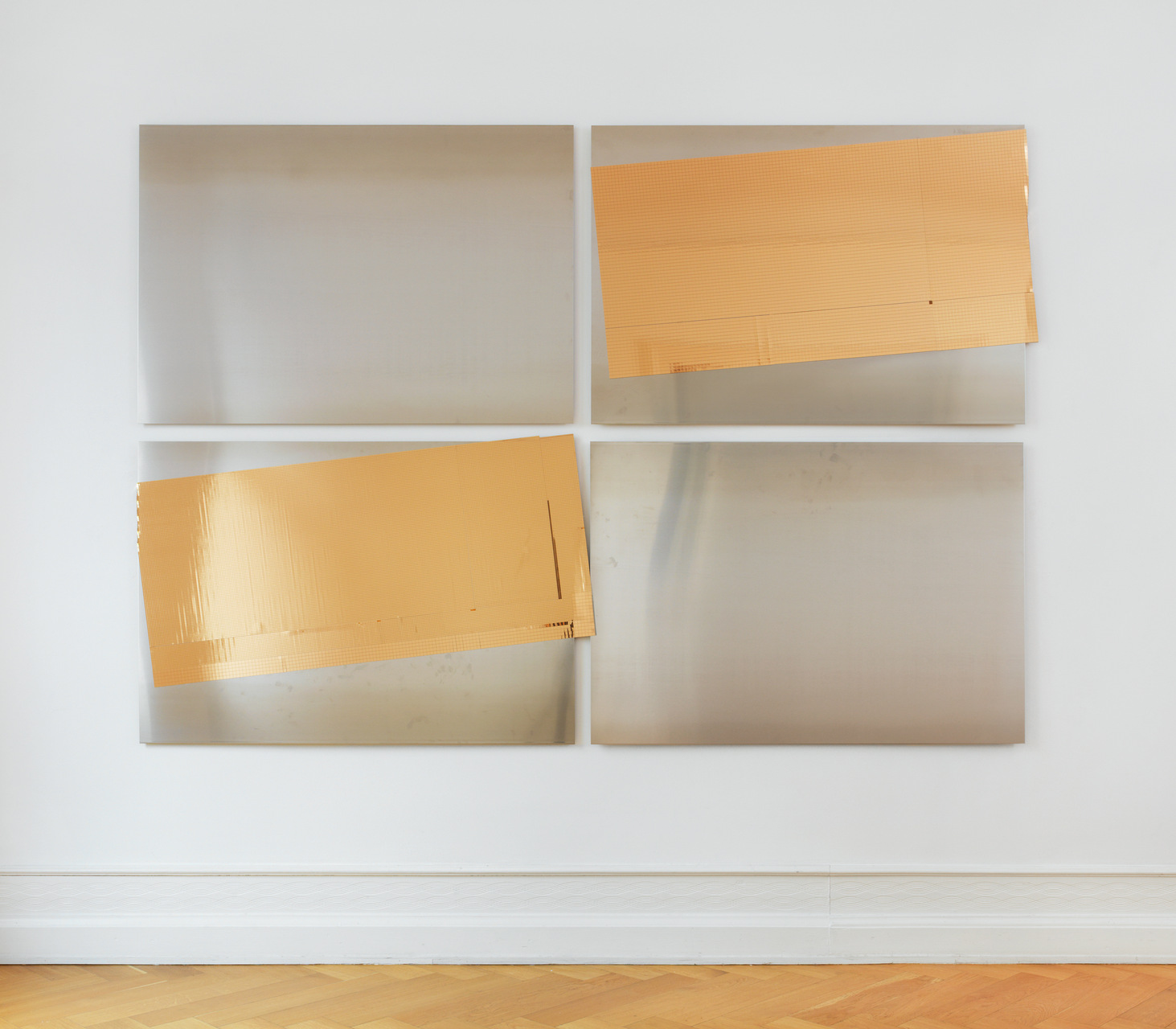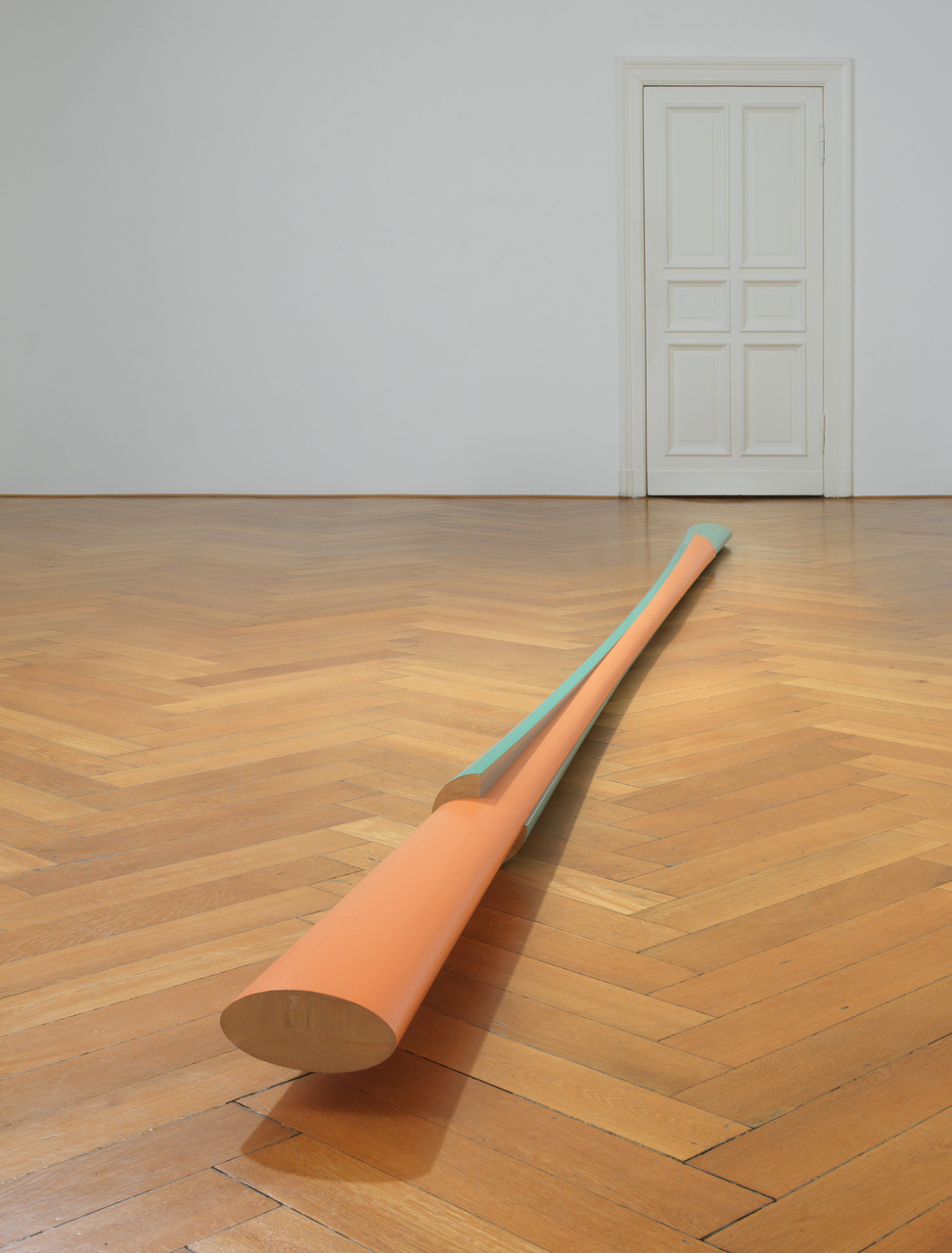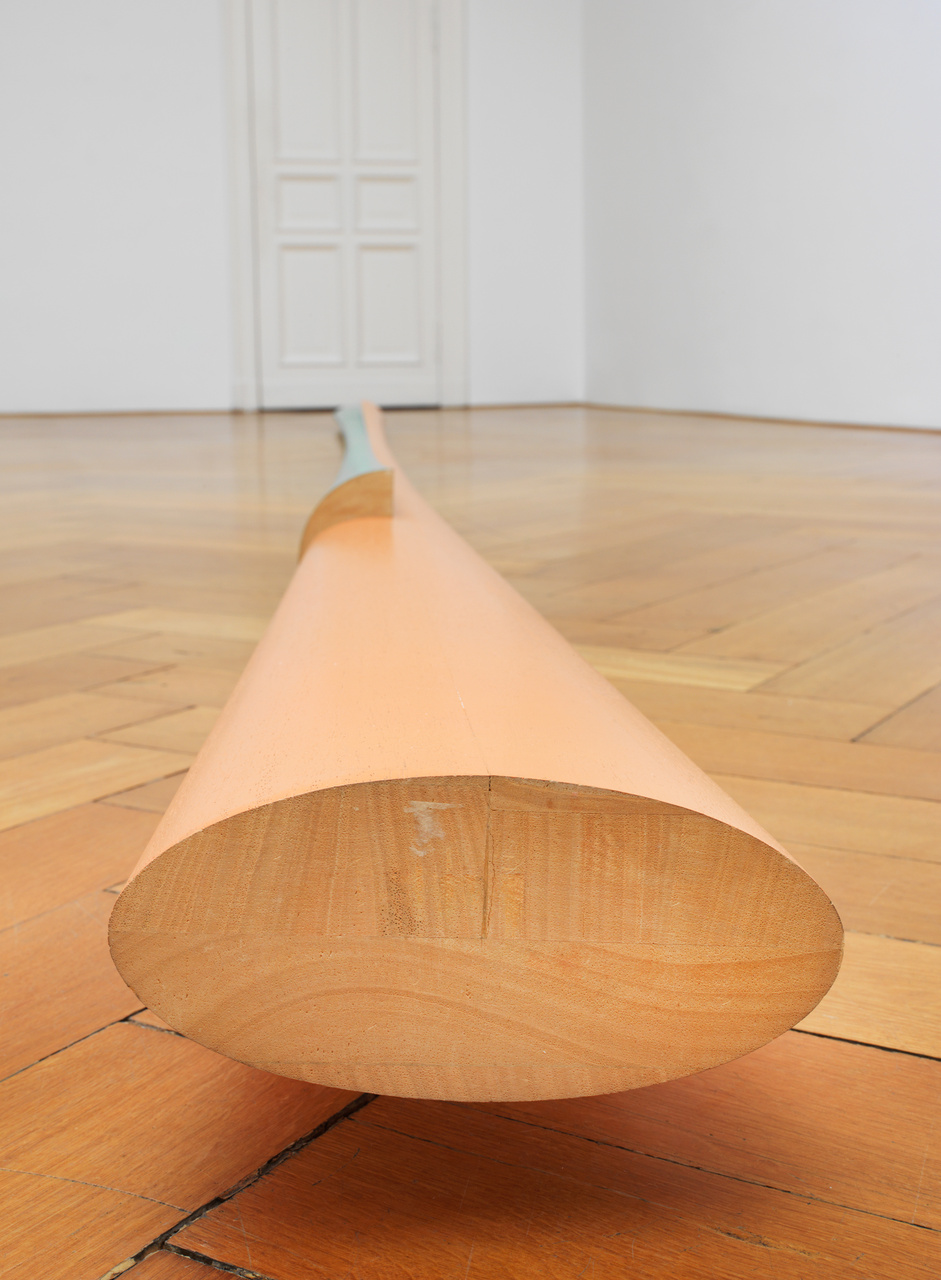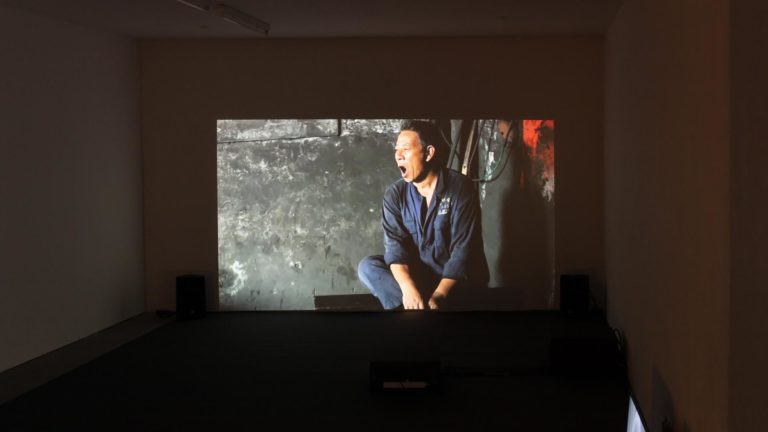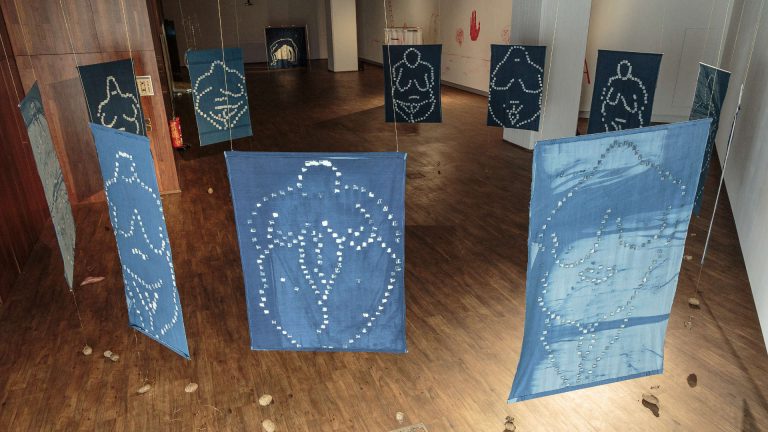Artist: Isa Genzken
Exhibition title: El Salvador
Venue: Galerie Buchholz, Berlin, Germany
Date: May 1 – June 27, 2015
Photography: images courtesy of the artist and Galerie Buchholz, Berlin
We are proud to announce the eleventh solo exhibition by Isa Genzken at Galerie Buchholz. Isa Genzken conceived this exhibition around “El Salvador”, her major Hyperbolo sculpture from 1980. She presents this work juxtaposed with new work from her current production.
“Proceeding from her geometric drawings of 1973, in which elements of the work were set in motion, Genzken now began to mobilize viewers themselves and to define sculpture as a series of performance events in space to be executed by the beholder. Utilizing a complex process, Genzken would go on to produce elongated, almost floating sculptures that lay on the floor as spatial translations of her drawings. In these works, as Benjamin Buchloh explains them, she took literally Barnett Newman’s expansion of the picture surface into space, which at the same time determines the position of the viewer and her own ‘zip’ in three-dimensional space. At first Genzken concentrated on ellipsoids, or shapes that have contact with the floor at only one spot in the middle; finally she moved to opening up their forms and developed hyperboloids that touch the floor only at their extremities. By cutting, hollowing, and twisting, as well as utilizing special color and surface combinations, Genzken managed to create more extreme, ‘faster’ forms. It was impossible to fully appreciate their elongated, curving shapes from a single viewpoint. Whereas the forms embody speed in themselves, viewers are forced to virtually conquer the sculptures in space and to experience them, in individual sections and from new perspectives, as a ‘curving continuum of space and time’. As one explores them, it becomes clear that the lines of the sculptures never come together, pointing ‘to open space as an always omitted third element.’ Between 1976 and 1982, Genzken produced a total of thirteen Ellipsoids and six Hyperbolos, ranging in length from ten to more than thirty feet. In these works, the artist set new standards with respect to technology-supported construction and, at the same time, worked to expand the accustomed parameters of sculpture. The definition of space, the permanence of materials, the deployment of volumes, weight, mass, and gravity, issues such as interior and exterior, and questions of site – all concerns typical of sculpture – came into new, provocative focus in these works.”
Sabine Breitwieser, “The Characters of Isa Genzken: Between the Personal and the Constructive, 1970-1996”, in ‘Isa Genzken. Retrospective’, exhibition catalogue, The Museum of Modern Art, New York 2013/2014; Museum of Contemporary Art, Chicago 2014; Dallas Museum of Art, Dallas 2014/2015, ed. by The Museum of Modern Art, New York 2013, pp. 28.
“The logical and, in my view, most interesting development thus arises from the transition from the first full Ellipsoids to the open objects and the two- or three-part objects, in which that same disassociation of movement is made visible. At the same time, Genzken progressively abandons the three primary colors in favor of in-between colors that clearly accentuate the changing structures, albeit with an element of determined evasiveness. A process ensues here that deliberately sets itself apart from all minimal art. The referential nature of the objects already points in that direction. These general characteristics of the works are reinforced by a systematic non-identity of form. In these hollow or multipart objects, which are seemingly intended to fundamentally embody the possibility of constructing a geometric entity, there is – contrary to expectation and by virtue of their differing lengths and diameters and the irregular distribution of their mass-a constant relativization of the congruence of the form with itself. Evidence is thereby generated and retracted in the same breath, through the ensuing demand that it should be accepted as evidence. A concrete axiom is constructed yet its coherence undermined. Logic is neither clouded nor contradicted; it is deferred with the help of and on behalf of its own means. Each of these objects maintains its own secret excesses and disclaimers, in that, by dismantling its inner structure, it lays bare the entirety of its organizational laws and, by means of this same intervention, displaces them through transformation. One momentarily has a sense of how much caprice there is in a concept such as that of precision and how much guile there is in a rationale that rapidly deteriorates. Because no figure has exactly the qualities that we would by definition ascribe to it, the asymptotic adjustment of object and law is constantly drawn into the realms of the admissible.”
Birgit Pelzer, “Axiomatics Subject to Withdrawal”, in: Lisa Lee ‘Isa Genzken’, October Files 17, The MIT Press, Cambridge/London 2015, pp. 10–11.
Gold und Silber, 2015
Untitled, 2014
Grün-orange-graues Hyperbolo ‘El Salvador’, 1980
Yachturlaub, 1993
Schauspieler, 2013
Schauspieler, 2013
Schauspieler, 2013
Schauspieler, 2013



